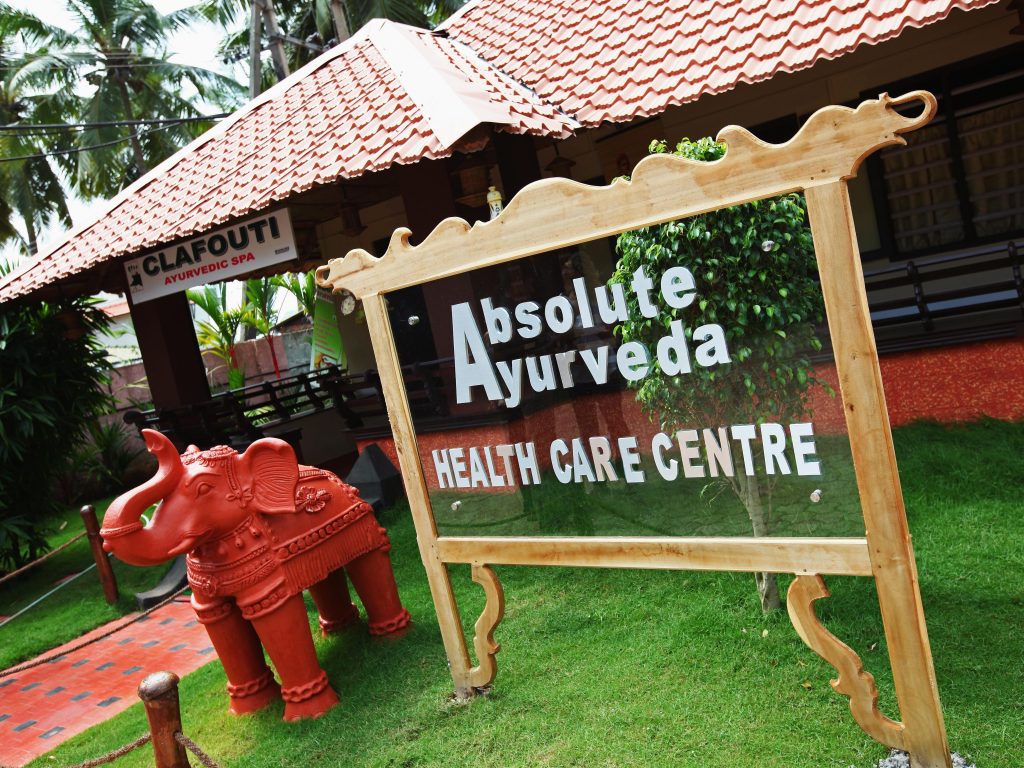- Ayurveda is a traditional Indian medical practice dating back 5,000 years.
- Ayurveda is growing in popularity among American wellness celebrities, and demand for its services could reach $6 billion by 2026.
- The practice uses herbs and dietary changes to bring a person's body back into balance.
The wellness industry is becoming inundated with products marketed as having roots in Ayurveda, a traditional medical practice originated and established in Indian.
Kourtney Kardashian and Gwyneth Paltrow have said they practiced certain Ayurvedic treatments, including a multi-day cleanse and eating foods meant to restore the body's imbalances. The two sell products linked to Ayurvedic medicine — including a tongue scraper and basil supplements — on their respective wellness sites, Poosh and Goop.
American celebrities bringing the practice to their audiences depicts the growing demand for Ayurvedic treatments and services. French market research firm ReportLinker estimates the global Ayurveda market could grow by $6.81 billion between 2022 and 2026. The World Health Organization announced in 2020 plans for a global center dedicated to studying and teaching Ayurveda in India.
According to two practitioners who obtained Bachelor of Ayurvedic Medicine and Surgery degrees from schools in India, interest in Ayurveda has ballooned in the last decade, but misconceptions about the practice remain widespread in the US.
Here's what you need to know about the practice:
The two words that underpin Ayurvedic principles, and what they mean
Ayurveda is a traditional Indian medicine practice that dates back 5,000 years.
The main principle of Ayurveda is restoring a person's prakruti, or their body's original state at the time of birth, said Dr. Bharat Vaidya, a Colorado-based practitioner with both a Bachelor of Ayurvedic Medicine and Surgery degree from India and a medical degree from Catholic University in Belgium.
Vaidya said a person's prakruti can become unbalanced by unhealthy diet and lifestyle choices. The Ayurvedic doctor's job is to locate where the imbalances lie and offer treatments bring the body back to its original state.
Ayurveda views human beings as a microcosm of the universe, said Ashlesha Raut, an Illinois-based practitioner with a Bachelor of Ayurvedic Medicine and Surgery who has served as an executive on the Association of Ayurvedic Practitioners of North America.
Raut said the framework of viewing humans as part of the universe means the elements we use to analyze the outside environment — fire, wind, and water — should be applied internally to humans. The "bioenergies," or the elements of fire, wind, and water that exist within the body, are called doshas.
In Ayurveda, doshas comprise a person's entire physiology. "As you move, whatever happens to your body is because of these three doshas, and that is the whole basis of Ayurveda," Raut said.
An Ayurvedic doctor's job is to study their patient's doshas and determine which ones are out of alignment, causing an imbalanced prakruti. The Ayurvedic doctor restores the balance by prescribing herbal remedies and changes to diet and lifestyle.
Vaidya said modern medicine has added context to Ayurvedic's reliance on diet and lifestyle treatments. For example, evidence that eating poorly disrupts the microbiome, or the assortment of microorganisms that live in our gut, contributes to our understand of balance in the body. Gut bacteria manufactures most of the body's serotonin, a chemical that aids in motor skills, cognition, mood, healing, and a variety of other functions.
He also pointed to the fact that studies have repeatedly shown eating more vegetables and exercising can prevent against diseases and improve mental wellbeing.
"Restoration of the balance of mind and body is the key line of treatment in Ayurveda," Vaidya said.
Ayurvedic doctors have adapted to work within Western medicine
Raut said she assess a patient by observing their body and emotions by interviewing them during an initial consultation. She then runs physical tests to check a patient's pulse, tongue, nails, skin, facial expressions to determine the body's imbalances.
After getting an assessment from the patient, Ayurvedic doctors will suggest changes to their diet, lifestyle, and "thought process," Vaidya said.
Many vaidyas, or Ayurvedic doctors, practicing in the US work within allopathic medicine, meaning they do not ask patients discontinue using pharmaceutical drugs and other modern treatments, Vaidya said. He said he makes recommendations within Western diets and does not tell his patients to stop eating meat, even though traditional Ayurveda suggests following a vegetarian diet.
Ayurveda is not religious
Furthermore, Vaidya said Ayurveda is not bound to any religion, and he treats clients of many different faiths.
Raut said a common misconception about Ayurveda is that it's a "folk medicine," which implies something passed on by word of mouth. Ayurvedic doctors have documented their practices for centuries, she said, and written their findings in reference books.
Raut said people who have obtained a Bachelor of Ayurvedic Medicine and Surgery from an accredited school in South Asia must spend eight to 10 years after graduating high school to learn the entire curriculum. After graduating, Raut then spent years in residency learning from other Ayurvedic doctors.
"One has to understand that this is a complete, defined science," Raut said. "People many times just think, 'Oh, it's some folk medicine from India.' It is really not like that."

